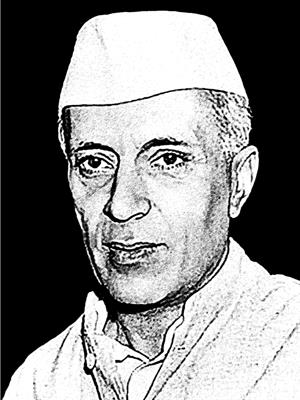
PUMPA - SMART LEARNING
எங்கள் ஆசிரியர்களுடன் 1-ஆன்-1 ஆலோசனை நேரத்தைப் பெறுங்கள். டாப்பர் ஆவதற்கு நாங்கள் பயிற்சி அளிப்போம்
Book Free DemoHistory of Public Sector in India:
Pre-Independence India witnessed industries and ordnance factories established by the British, which exploited the resources and raw materials available in the nation.
The Indian leaders planned for industrial development in which the country lacked their expertise, as around 60\% of the country’s population was dependent on the Agriculture sector.
Top Industrialists of India met in 1940 and charted a new course for the Indian economy by preparing a plan which was later known as the “Bombay Plan”. This plan emphasised “doubling the per capita income in 15 years”.
Sarvodaya Plan (1950): This plan stressed building more small, and cotton industries and also went on to emphasise decentralised planning. This planning was drafted by “Jayaprakash Narayan ''.
Nehruvian Period and Public Sector:

Jawaharlal Nehru
Jawaharlal Nehru, the first Prime Minister of India, took calculated steps that changed the course of the Indian economy.
In 1938, the “Economic Programme Committee” was formed by the “Indian National Congress” with the objective of “balancing the public and private partnership in the Indian economy”. This committee was the precursor of the “Planning Commission” in India.
1948: This year is significant in the Economic History of India, as the Industrial policy of 1948 was enacted, which played a decisive role in shaping the economy. This policy is also known as the “Economic Constitution of India”.
The year 1950 witnessed the establishment of the Planning commission in India with “Jawaharlal Nehru” as its first chairman. It was tasked to make plans for the balanced utilization of resources.
The Era of Industrialisation:
Inspired by socialist ideologies, Nehru batted for an economy with a blend of Public and Private sectors. His vision of the Indian economy was based on Industrial supremacy and Import substitution.
His government followed the principle of “Planned Economic Development” which was attained through the “Planning Commission” and its “5-year plans”.
P.C. Mahalanobis: He was the Chief Statistician of the Nehru government who charted plans for socio-economic development in India. He is also known as the “Father of Indian Statistics”.
The second five-year plan of 1956:
India’s planning architecture took a different turn under the aegis of Nehru, during the Second five-year plan, which took place in (1956 – 1961). Mahalanobis was the chief architect of this plan; hence the plan was also known as the “Nehru-Mahalanobis plan”.

Small-scale industry
This plan emphasized the development of “basic goods”, small scale and ancillary industries, which attracted investments from other nations.
Basic Goods: These are goods that are used to manufacture other goods. It can either be capital or investment goods.
Import substitution was also encouraged, which helped Indian industries to create goods that would decrease their dependence on imports from foreign nations.
The Economic Policy of 1991:
The reforms brought during 1991, was the brainchild of Manmohan Singh (then Finance Minister) and Narasimha Rao (the then Prime Minister).
The duo’s policy paved the way for the new course in India’s modern economy. Some of the important policies announced under this policy are:
1. Disinvestment (lowering government control) on Public Sector units.
2. Abolition of License Raj (mandatory licenses required to begin a company in India)
3. Encouraging Foreign Direct Investment in India.
4. Approval for Multinational companies to establish their firms in India.
Public Sector – Objectives:
1. Attract financial resources for the development of India.
2. Encourage balanced growth among the cities and villages of the country.
3. Rapid economic growth by expanding infrastructure base.
4. Development of small-scale industries, which in turn boosts employment opportunities. Eliminating regional growth imbalances.
5. Increase import substitution and reduce the dependency on imports.
Reference:
Small-scale industry: Hari Mahidhar / Shutterstock